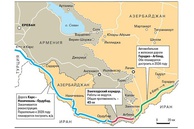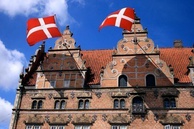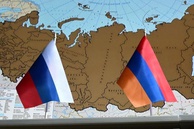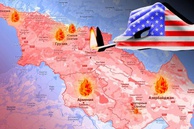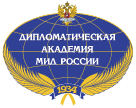Amid the current standoff in Armenia, Prime Minister Nikol Pashinyan has launched an unprecedented campaign against the Armenian Apostolic Church (AAC) and Catholicos of All Armenians Garegin II, which culminated in the arrests of Russian businessman of Armenian descent Samvel Karapetyan and a number of oppositionists and clergymen charged with making public calls for the seizure of power and the violent overthrow of the constitutional order, as well as the organization of terrorist attacks. These developments have received wide international resonance and various interpretations depending on the source of information. The conflict has both political and economic overtones.
Part I
Chronology of the escalation of the conflict
An anti-church movement called "New Armenia, New Patriarch" was created by supporters of the current authorities in the immediate wake of the 2018 "velvet revolution." Tensions between the government and the church started shooting up after the second Karabakh war in 2020, when Catholicos Garegin II joined the opposition’s demands for Pashinyan's resignation.
On October 6, 2022, at the summit in Prague, Pashinyan officially recognized the territory of the now defunct Nagorno Karabakh Republic (NKR) as an integral part of the Republic of Azerbaijan. Catholicos Garegin II described Pashinyan's actions as "inappropriate and not conducive to the resolution of the Artsakh issue." Armenian expat organizations likewise condemned the Premier’s move.
After Karabakh’s final transfer under Azerbaijani jurisdiction in September 2023, Garegin II blamed the tragedy of the Karabakh Armenians on “the policy pursued by the Armenian authorities towards Artsakh and the split of the Armenian people.” [1]
Snubbed by the church’s principled position, Pashinyan initiated a wholesale propaganda campaign against Garegin II, which was accompanied by violent actions against and mudslinging of the Catholicos and clergy of the Armenian Apostolic Church.
Local media then wrote about the anti-church movement “directed by the highest echelons of power.”
“This once again testifies to the fact that under Nikol Pashinyan the anti-church wave has reached unprecedented proportions. ‘Velvet’ extremists never tire of making statements directed against the Church and the Catholicos on the floor of the National Assembly.” [2]
The Prime Minister responded to this by telling Parliament, “If the Church has a bad relationship with the government, then it has a bad relationship with God.” [3]
In the spring of 2024, public protests [4] against territorial concessions to Azerbaijan during the delimitation and demarcation of the border intensified. The protests were initially supported by representatives of the Armenian clergy, above all by the head of the Tavush Diocese, Archbishop Bagrat Galstanyan.
The protesters, united in the “Tavush for the Motherland” movement (later renamed “Sacred Struggle”), recognized the archbishop as their leader, whose call for “total disobedience actions” reverberating all across the country. Their goal was to exert pressure on the MPs, urging them to listen to the opposition’s call and express no confidence in Nikol Pashinyan.
The methods used to achieve this goal mirrored the ones, which the authorities themselves used in 2018 against then-Prime Minister Serzh Sargsyan, who was forced to resign.
Nikol Pashinyan and his team responded to this by ramping up their vitriolic campaign of discrediting and pressuring the Armenian Church, especially following a meeting between Pashinyan and CIA Deputy Director David Cohen. [5]
Pashinyan rather absurdly accused the AAC of thousand-year betrayal of Armenians in the interests of third forces, of being an "agent of influence." He backed up the attacks of Echmiadzin (the spiritual and administrative center of the Armenian Apostolic Church) with suspicions of the Church allegedly concealing taxable income. Not satisfied with discrediting the Church, the Prime Minister came up with a surprising twist of imagination: “Our allies took part in the preparation for the 44-day war - not on our side. And I know at least two CSTO countries that participated in this." [6] He then proceeded by hinting at a certain collusion by some unnamed Orthodox CSTO member states and their link with Azerbaijan and opposition protests inside Armenia, including the recent ones with the participation of the clergy as a "united plan to destroy the Republic of Armenia." These accusations against the allies and the AAC caused bewilderment and held no water as neither hard facts, nor official evidence was presented.
At the end of June 2024, the “Tavush for the Motherland” protest movement, tens of thousands of people participated in, had all but petered out as even the Church was unable to consolidate the Armenian opposition due to the clash of their leaders’ ambitions. Some of them openly declared that their “waters cannot flow in one stream.” [7]
The issue of the standoff between the government and the AAC has temporarily disappeared from public debate. When meeting [8] with representatives of the Armenian Diaspora in Switzerland on January 25, 2025, Nikol Pashinyan merely voiced concern about the lack of transparency in the AAC’s economic activities. He also emphasized that he had no intention to remove the Catholicos of All Armenians Garegin II, referring to the principle of separation of church and state. [9] In keeping with the Constitution of Armenia, the AAC has a special status, and the state has no right to interfere in the internal affairs of the Church.
Catholicos Garegin II spoke at the international conference held by the World Council of Churches (WCC) in Switzerland on May 27-28 on the preservation of the Armenian religious and cultural heritage of Artsakh (Nagorno-Karabakh).
Nikol Pashinyan responded to this by resuming his public campaign against the AAC. During a May 29-30 Cabinet meeting, he said that Armenian churches were “cluttered” and used as “closets.” He then posted offensive posts on Facebook*, using obscene language against church leaders.
The initial reaction to the Prime Minister’s surprise Facebook post was that of disbelief, that his page could have been hacked. However, it was followed by other posts of the same content, which convinced everyone that Nikol Pashinyan was indeed the author.
Meanwhile, similarly offensive posts began to appear on the Facebook page of his common-law wife, Anna Akopyan. Mincing no words, she called the Catholicos the country’s "main mafioso."
Even though most social media users found such language unacceptable, the critical feedback did not stop Nikol Pashinyan, who wrote that the Republic of Armenia should have a decisive vote in the election the Catholicos of All Armenians, and that candidates should undergo an integrity check.
On May 31, Pashinyan proposed changing the procedure for electing the Catholicos that would enshrine the "decisive role of the Republic of Armenia." [10] On June 9, he demanded the resignation of Catholicos Garegin II, calling him for the first time by his secular name, Ktrich Nersisyan.
On June 17-18, the police detained Samvel Karapetyan, a Russian-Armenian billionaire and the head of the Tashir Group of Companies, following his public support for the church.
"This is not a village near Kaluga. This is the Republic of Armenia. I hope the taste of the state will remain in your mouth," [11] menacingly warned Pashinyan.
Police commandos broke into Karapetyan's house in Yerevan and conducted searches, detaining about 50 supporters at his mansion.
On June 24, the Civic.am information and analytical portal with close links to the ruling Civil Contract (CC) party, published an article “The Opposition Coup Plan,” [12] allegedly provided by a “reliable source within the opposition.” The plan contains an eight-stage roadmap for removing Nikol Pashinyan from power, with reference to a Russian connection. What’s more, the money for the implementation of the “plan” was supposed to come from Gazprom Armenia CJSC and South Caucasus Railway CJSC (subsidiaries of Russia’s Gazprom and Russian Railways, respectively), as well as the already arrested Samvel Karapetyan, the owner of Electric Networks of Armenia (ENA), a key asset of Russia’s Tashir Group. Again, no clear evidence followed.
The Prime Minister immediately recalled last year’s “failed coup,” that church ministers, among others, were allegedly supposed to take part in. Two days later, Archbishop Bagrat Galstanyan, the leader of the “Sacred Struggle” movement (the renamed “Tavush for the Motherland” movement), was arrested on charges of terrorism, inciting mass riots, and attempting to usurp power.
A court in Yerevan then issued a two-month arrest warrant for the head of the Shirak Diocese of the Armenian Apostolic Church, Archbishop Mikael Ajapakhyan, who was charged with making public calls for the seizure of power and the violent overthrow of the constitutional order (Part 2, Article 422 of the Criminal Code of the Republic of Armenia). Archbishop Mikael denied the charges.
On June 26, the Investigative Committee of Armenia announced the arrest of 15 more people from among the leaders and participants of the “Sacred Struggle” movement, all of whom were accused of organizing terrorist attacks and attempts to seize power.
On June 27, masked National Security Service agents entered the territory of the Mother See of Etchmiadzin and conducted searches in the residence of the Catholicos of All Armenians.
On July 1, Nikol Pashinyan, in an effort to split the clergy, called: “If Garegin II does not leave the patriarchate, we must all together eliminate him in a brotherly manner.” [13]
On July 4, the bishops and heads of the dioceses of the Armenian Apostolic Church in Armenia and the Diaspora, who gathered in Etchmiadzin, declared their loyalty to Catholicos Garegin II and pledged to “be guided by time-honored procedures, excluding any external interference.” [14]
On July 4, a march in support of the arrested businessman Samvel Karapetyan took place in downtown Yerevan, with thousands of people expressing their disagreement not only with the criminal prosecution of the businessman, but also with the government’s policy as a whole.
The day after the publication of the "Coup Plan," Prime Minister Nikol Pashinyan said that law enforcement agencies had thwarted nothing less than a "large-scale and sinister" plan by the "criminal oligarchic clergy" to destabilize the situation in the country.
Even though most analysts called out the sheer absurdity of the charges, the Investigative Committee of the Republic of Armenia (IC RA) doubled down on implementing the authorities' instructions.
The IC RA report specifies [15] that, at the request of the investigator, the prosecutor issued a ruling to initiate a criminal case against 16 people, 15 of whom were detained. In total, the IC conducted more than 90 searches in the homes of opposition members. The suspects include deputies from the Armenia, Dashnaktsutyun and Echmiadzin factions, as well as supporters of the “Sacred Struggle” movement.
In disclosing in an official report the "insidious" plan to seize power in the Republic of Armenia, the IC shows little ingenuity actually parroting the scenario that Western sponsors developed for Yerevan in 2018, namely: "In order to achieve their criminal goal of seizing power in the Republic of Armenia, members of the criminal group planned to ... paralyze traffic; ... to cause mass disruptions in the operation of traffic lights at intersections, ... to cause an uncontrolled situation among the population, ... to deprive the responsible state bodies of the opportunity to correct the situation, including by preventing or even eliminating the movement of the relevant police forces by blocking the exits to the places of internal police deployments in various ways, disrupting the movement of police vehicles... "
Regarding the material evidence found, the Investigative Committee reports that “while preparing for the implementation of the above-mentioned criminal acts members of the criminal group recruited more than 1,000 people through movement members; acquired a map of Yerevan (!!! - author's note) to determine the main streets and plan their actions, received data on the location of traffic lights, electricity and Internet splitters."
In its next official statement, the RA Investigative Committee informs about the results of searches conducted during the preliminary investigation of planned terrorist acts and usurpation of power by the leaders and participants of the "Sacred Struggle" movement. It turns out that the defendants possessed some "mysterious" unnamed flammable objects intended to damage power and Internet cables, which was seen as enough reason for detaining them.
Part II
Contradictory interpretations and analysis of political motivation
Official Yerevan is bending over backwards to make people believe that the crackdown on the AAC and the opposition is indeed a fight against terrorism. However, it does not provide any convincing evidence, which casts doubt on the legality of the arrests even among neutral observers. At the same time, information leaks are made indicating that the oppositionists allegedly wanted to coordinate their actions with Russia. Pashinyan presents all this to the Western audience, as a rather odd-looking means of countering “Russian influence."
It is obvious to most analysts that Yerevan’s Western curators have proposed the notion of a “domestic threat” as a classic scenario for consolidating power. Even more cynical are accusations of terrorism brought against people, whose only “crime” is organizing peaceful protests against territorial concessions.
Even Western polls show public criticism of the anti-church policy of the current Armenian government, with a June 23-25 poll [16] conducted by MPG/Gallup International Association in Armenia, finding that only 14.7% of 1,000 respondents are supportive of the government's meddling in the affairs of the AAC.
International response: the 16-million-strong Armenian diaspora, unlike the authorities of the host countries, was equally unanimous in condemning the actions of the RA leadership. In Britain, they called the persecution of the AAC "a desperate attempt to maintain a destructive course." In France, they warned that weakening the church would allow "any external forces to subjugate the country." In the United States people criticized what they described as "attacks on Christians," and in Germany – as an attempt "to place one of the oldest Christian institutions under state control." [17] This opinion was readily echoed by Armenians living in Italy, Lebanon, and Russia. [18] The massive international response suggests that Yerevan’s actions are perceived as political repression, while business leaders warn that the arrests of major investors are creating a toxic climate for investment.
Western media presents the ongoing internal conflict in Armenia as a clash between traditionalism and modernization, or as attempts by the pro-Russian opposition to prevent Armenia from normalizing relations with Azerbaijan and Turkey. Trying not to delve into the essence of the conflict, the media focuses on Nikol Pashinyan’s upcoming meeting with Ilham Aliyev in Dubai to clinch a peace treaty between the two countries, or on Pashinyan's modernization agenda and his "Real Armenia" plan in order to take the people’s attention away from issues like the loss of Nagorno-Karabakh, and make them focus instead on the modernization of society.
Opposition-minded political analysts see the arrests of billionaire Samvel Karapetyan, Archbishop Galstanyan and his supporters as an attempt to eliminate key government critics in the run-up to next year’s parliamentary elections. Political scientist Grant Melik-Shahnazaryan, head of the Voskanapat think tank, minces no words dismissing [19] the criminal cases as “fabricated to persecute the opposition wing” in order to suppress pockets of resistance and the consolidation of society around the opposition. [20] At the same time, experts believe, the West is now all set to phase Russia out of Armenia, including its military presence. Political analysts point out that this conflict is acquiring international significance, since Karapetyan is a Russian citizen and the owner of a Russian company.
Russian experts also focus on the violation of the rights of believers and the anti-Russian nature of the Armenian government’s actions, in particular the persecution of Russian businessman Samvel Karapetyan (44th place in the Forbes rating of Russian billionaires). The head of a State Duma committee, Yana Lantratova, said that "the basic international principles of the right to freedom of conscience and religion are being questioned by the Armenian leadership." [21]
Notably, Samvel Karapetyan was put on the Ukrainian extremist website "Mirotvorets" in April 2023 for allegedly engaging in "commercial activity in economic sectors that provide a significant source of income for the Russian government."
Karapetyan is one of the main, if not the biggest, contributor to the Armenian Church, having donated millions of dollars for the restoration and reconstruction of Echmiadzin. The search of his home came hours after he publicly criticized the attacks on the church, saying, “What opinion should I have when a small clique, forgetting Armenian history and the millennia of our Church, attacks it?” [22] No matter how hard the authorities tried though, Karapetyan’s arrest failed to win public support. Moreover, it actually opened the door for the businessman to enter big politics, where Karapetyan may potentially become the one of the main centers of power in the opposition camp. The newspaper Hraparak reports that the ruling party is already alarmed by the emerging protest consensus. [23]
At the same time, Karapetyan's lawyer Aram Vardevanyan believes that his client was taken into custody to ensure the unhindered nationalization of ENA, and the legislative changes hastily adopted by parliament indicate that the government had been preparing for this for a long time. In his opinion, these changes are unconstitutional, interfere with property rights and trample on the protection of foreign investments. He also recalled that the Public Services Regulatory Commission of Armenia did not report any violations in the work of ENA. [24]
According to most experts, the government is using the domestic political process to clean up the political and economic field in order to minimize domestic opposition while securing Western support, especially in the context of European integration and the fight against the so-called "Russian influence."
Pashinyan's increased activity has to do not only with attempts to normalize relations with Azerbaijan and Turkey, but also with his agreement to open the Zangezur corridor. Getting back home from the 17th summit of the Economic Cooperation Organization [25] (July 3-4), held in Karabakh, Erdogan lauded [26] Pashinyan for changing his position on the “Zangezur Corridor” and emphasized the project’s importance for Turkey’s emergence as a key transport hub. In fact, Erdogan confirmed that Pashinyan is implementing a project that is of the utmost importance for Turkey.
In this regard, Washington’s US plan to unblock communications between Armenia and Azerbaijan plays an important role, according to which the US will guarantee the stability of the agreement through the direct participation of American business. [27] This option perfectly fits Trump's strategy of taking control of the world's main logistics routes. According to the plan, the United States will most likely exercise a great deal of influence, possibly via Turkey, over the Zangezur corridor. This means that Russia and Iran may be excluded from participation in logistics from China and Central Asia to Europe, and at least part of the cargo flow in Armenia (a member country of the EAEU) will be directly controlled by the US. Obviously, the decision of the Armenian authorities to open the Zangezur corridor and hand it over to US control will be tantamount to their exiting the EAEU. The Russian leadership is perfectly aware of these preparations with Deputy Prime Minister Alexei Overchuk warning that Russia would introduce appropriate measures, since “regulatory acts introduced in Armenia simplify some rules for certification of food products from states that are not members of the EAEU. This means that goods that do not meet our requirements may enter the internal market of the union.” [28]
Fully aware of their country’s inevitable break with the EAEU, the Armenian authorities will try to pre-emptively switch all financial flows to themselves. Therefore, chances are high that Pashinyan’s government will urgently, under various pretexts, transfer other Russian companies to state ownership following the ENA, the South Caucasus Railway, Gazprom Armenia, etc.
Until recently, the current legislation did not allow nationalization, but the ruling Civil Contract faction resorted to legal manipulation, adding amendments to provide “levers of effective management in the energy sector.” On July 3, the Armenian parliament adopted [29] a bill allowing for the nationalization of Karapetyan’s energy company, Electric Networks of Armenia. The document makes it possible to take the company into state ownership. It looks like the company will not remain in this status for long though. It may soon be handed over to Turkish investors in line with Washington’s current course of liberation from “Russian energy dependence” and integration into Turkish-Azerbaijani energy, communications and other projects. The opposition previously called [30] this bill an attempt at state racketeering and the seizure of property from investors, as well as political pressure on ENA owner Samvel Karapetyan, who is currently under arrest.
British trace
Pushing the “opposition conspiracy plan” onto social media and the Internet is very reminiscent of the well-known provocation by the British intelligence with the publication of the “Zinoviev letter.” [31] This time round, the fake “coup plan” is intended to stoke up anti-Russian hysteria and discredit the opposition and clergy in Armenia. This could hardly have happened without the “careful guidance” of MI6 [32], since this service stays true to its successful patterns.
The expert community also notes that the Armenian authorities’ campaign against the church coincided with renewed criticism of the Armenian Church by Azerbaijani officials, and the arrests of oppositionists in Armenia were synchronized with a demonstrative act of intimidation of Russians in Azerbaijan. [33]
All signs are that the plan prescribed to them by Western intelligence services is now being implemented, similar to what happened in 2022-2023 during the blockade of the Lachin corridor. Back then, the goal was to force Russian peacekeepers to enter into conflict with Azerbaijan or to discredit them in the eyes of the Armenians with a view to further removing the Russian military contingent from the region. [34]
The signature tactic of the British special services is hard to miss here. As Russia's positions on the Ukrainian track strengthen, it is becoming increasingly obvious to the West that Russia will not be brought to its knees, that it will not be defeated by military means. Aware of this, the British are trying to create a new arc of tension along the perimeter of Russia's state borders. [35]
I looks like Yerevan has been assigned a strategic task to roll back Russia’s military presence in the South Caucasus, in particular, to shut down the Russian military base in Gyumri. Within the framework of this strategic plan, tactical tasks already being implemented are to replace Catholicos Garegin II with a more accommodating cleric; to clear the opposition field ahead of the 2026 parliamentary elections; to snap up, raider style, Russian assets in Armenia before it leaves the CSTO and the EAEU.
***
The current Armenian government is trying to cozy up to the West with its “new liberal values,” to transform Armenian society into a community of individuals (“proud citizens of Armenia”) devoid of national traditions and historical memory.
They have already begun to change the institutional memory of the Armenian people. The Prime Minister said that it is necessary to create a new model of patriotism, and then proceeded to erase “outdated” narratives from people's consciousness. He announced that neither the country's coat of arms, with Mount Ararat in the center, (as a symbol of the nation, revival and Christianity), nor its anthem "have anything in common" with today's Armenia. Pashinyan's fellow party members make no secret of the fact that his rhetoric is aimed at changing Armenia’s national and state identity.
Speaking at the World Armenian Summit in Yerevan on September 18, 2024, Pashinyan described patriotism as "destructive" and an idea inspired by foreigners. He described the Armenians’ determination never to forget the Armenian Genocide as manipulation by the Soviet Union used as a means of countering Turkey and NATO, calling it an instrument of Soviet propaganda.
Thus, all the traditional lynchpins and cornerstones of Armenianism have been subjected to an unprecedented attack. The historical prospects of Armenia and the Armenian nation will thus be determined by both the changes taking place in the world and the political situation at home. Hopefully, the West will not be able to achieve its goal, since the issue of Armenian identity and spiritual and cultural heritage is deeper and broader than the aspirations of one political force, even one that is temporarily in power.
The opinion of the author is his own and may differ from the position of the Editorial Board.
* (belongs to Meta Platforms, banned in Russia)
[1] https://news.am/rus/print/news/784358.html
[2] https://armeniatoday.am/politics-ru/internal-policy/706035/
[3] https://dzen.ru/a/ZbeOF9nqGHaVu7NU?ysclid=mcrjdwlkpf585291568
[4] https://interaffairs.ru/news/show/46213
[5] https://am.sputniknews.ru/20240521/pashinyan-v-erevane-provel-vstrechu-s-zamdirektora-tsru-76045845.html
[6] https://news.am/rus/news/824834.html
[7] https://eadaily.com/ru/news/2024/07/03/dvizhenie-rabotaet-nad-oshibkami-lider-protesta-razocharovan-gagikom-carukyanom-smi
[8] https://www.primeminister.am/ru/press-release/item/2025/01/24/Nikol-Pashinyan-Armenian-Community/
[9] https://newsarmenia.am/news/armenia/pochemu-armyanskaya-tserkov-ne-platit-nalogi-pashinyan-schitaet-neobkhodimym-obespechit-prozrachnuyu/?ysclid=mchwhfr3yz183480060
[10] https://russia-armenia.info/node/103721
[11] https://news.am/rus/news/888858.html
[12] https://civic.am/news/95792
[13] https://eadaily.com/ru/news/2025/07/01/pashinyan-hochet-svergnut-katolikosa-vseh-armyan-rukami-zhenatyh-svyashchennikov
[14] https://am.sputniknews.ru/20250704/izbirayuschiy-katolikosov-natsionalno-tserkovnyy-sobor-aats-podderzhal-garegina-ii-90984265.html?ysclid=mcs0twhoei770606376
[15] https://investigative.am/en/news/36436
[16] https://yerevan.today/ru/pros-gallup/
[17] https://t.me/vneshvrag/3402
[18] https://ria.ru/20250531/sojuz-2020113654.html?in=t
[19] https://vz.ru/world/2025/6/25/1340989.html
[21] https://ria.ru/20250617/armeniya-2023435531.html?ysclid=mcq6wenysa883626614
[22] https://www.rbc.ru/politics/27/06/2025/685e3e489a794784067e459b?ysclid=mcq727buz9404893868
[23] https://hraparak.am/post/9fe5bde29307388d6d259539d50cbb78
[24] https://www.ng.ru/cis/2025-07-02/5_9285_armenia.html
[25] Incorporates ten Southwestern and South Asian countries.
[26] https://news.am/rus/news/892576.html
[27] https://www.middleeasteye.net/news/azerbaijan-aliyev-and-armenia-pashinyan-meet-dubai
[28] https://www.interfax.ru/world/1033403
[29] https://news.am/rus/news/892199.html
[31] "The Zinoviev Letter" is a forgery, a deliberate provocation by British intelligence. The letter is dated September 15, 1924, allegedly written by the Chairman of the Comintern Grigory Zinoviev and addressed to the Central Committee of the Communist Party of Great Britain. In the letter, Zinoviev allegedly gave direct instructions to his British comrades on organizing a revolutionary uprising. According to the letter, the English communists were to begin subversive activities in the army and navy, recruit representatives of the authorities to their side, and train personnel for armed confrontation with the capitalists. It later transpired that a White Guards officer and the notorious Sydney Reilly had a hand in the forgery. https://www.thecrimson.com/article/1970/2/17/harvard-plates-solve-mystery-british-spy/
[32] https://www.7or.am/ru/news/view/207704/
[33] https://www.ntv.ru/novosti/2918325/?ysclid=mcpdv5jnwo670608272
[34] https://www.perspektivy.info/upload/iblock/49c/38m8kf1shsdn3u0xhbies4ute1jwoikt/4_2024_1_2025_54_73.pdf
[35] New MI6 boss named as former ambassador to Turkey Richard Moore | MI6 | The Guardian
read more in our Telegram-channel https://t.me/The_International_Affairs

 19:01 11.07.2025 •
19:01 11.07.2025 •

